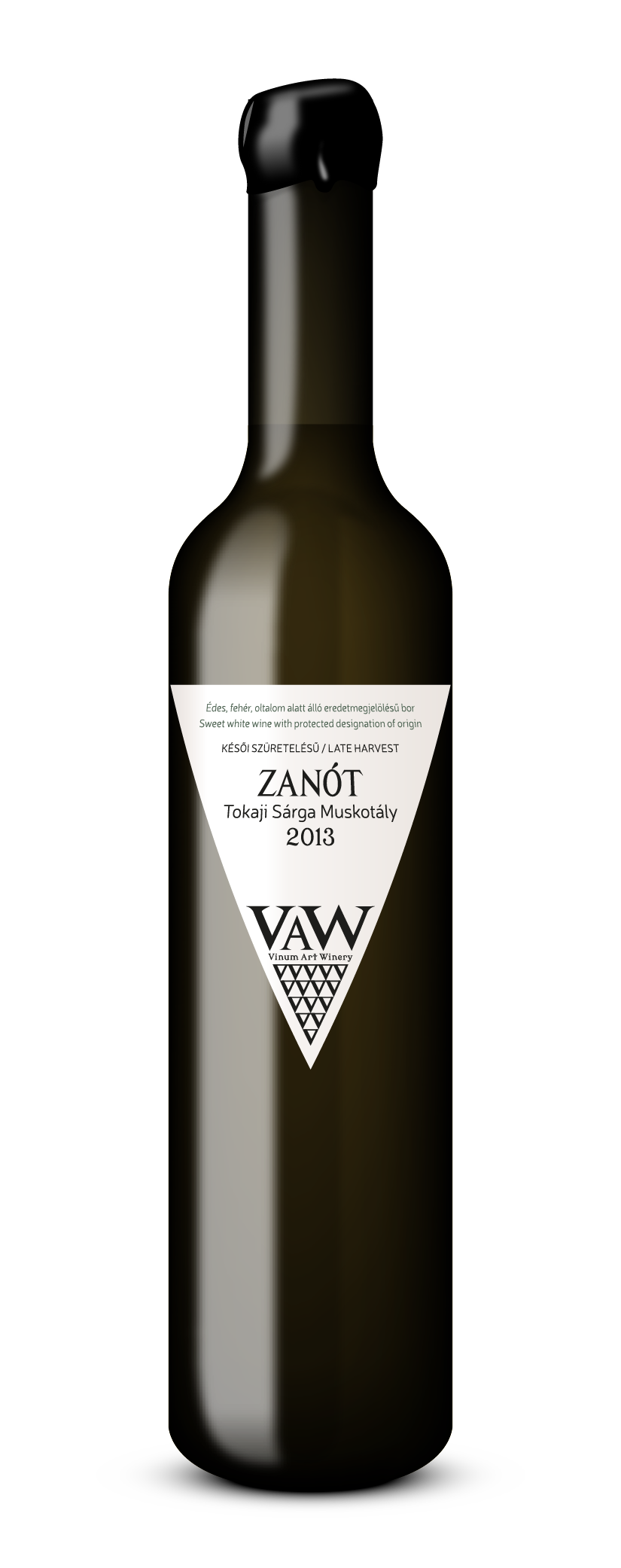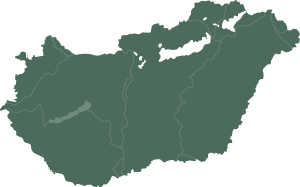Personal opinion:
It is characterized by elder-flower, citrus and a high aroma concentration and definite alcohol. When pouring it into a glass it immediately sends spring flowers into the nose.
It is rather cheerful and happy. I would readily give it to my partner instead of a bunch of flowers. If our partner does not appreciate it by any chance, we are still in a good position. This wine is a big favourite with ladies.
Gastronomical pairing:
I recommend this wine with desserts made with walnut or chocolate. To me Gerbeaud (a walnut and apricot layered, traditional Hungarian cake with chocolate on the top) seems to be the best choice, but pancakes may also work.
About the Sárga Muskotály or "Yellow Muscat" variety:
The Muscatel is one of the most ancient white wine-grape varieties. Besides its several wine-grape varieties, it is also very popular as table wine, often used to produce raisins or grape juice.
During its long history more than 200 varieties were improved. However, only four or five of these are suitable for making quality wine. The sugar content of the grapes is relatively high. Therefore, in regions with a warmer climate it is relatively easy to make sweet wine from this variety. The main reason for its popularity is that it reflects the taste of the grape well. Its wine can also be an excellent dry one with a savoury Muscatel aroma.
It was probably brought by the Greeks to southern France, and it spread further into Europe and overseas from there. Today it is grown in smaller or larger regions in all the vine-growing countries of the world. In certain vine-growing regions and countries, the names of the variety are so varied that it is often difficult to identify. In France it is known as Muscat Blanc and Muscat d'Alsace, in Italy as Moscato Bianco, in Spain as Moscat, in Portugal Moscatel, in Greece as Muskuti, in Australia as Brown Muscat, while in Hungary as Sárga muskotály (Yellow Muscat) or Muscat lunel.
Its growth is of medium strength with decumbent shoots. Its leaves are serrated. It is specifically sensitive to diseases. Its berries are small but – contrary to its name – their colour ranges from light yellow to reddish brown. If they hold back its yield, that is not too big anyway, it can give excellent wines. Of all the Muscatels used to produce wine, this is of the best quality.
In Hungary it is mainly grown in the Tokaj wine region, and it is used to produce both sweet and dry wines.
The region and its history:
It cannot be established with surety today who originally planted the southern slopes of the Tokaj region (Hegyalja) with vine. It is, however, certain, that there was viniculture here already before the settlement of the Magyars in Hungary.
After the invasion of the Tatars (1241-1242) Béla IV invited Italian grape-growers into the country who settled in Olaszi (Bodrogolaszi), Sárospatak and Liszka (Olaszliszka). They, the Italian viniculturists, were the ones who laid the basis of international fame for the wine region, bringing with them the varieties of their homeland located more to the south. It is also a proven fact that the most illustrious variety in Tokaj, the Furmint, is also of Latin or Italian origin („mea nec Falernae temperant vites, neque Formiani pocula colles” [Horatius]).
The name Tokaj-Hegyalja came from the town of Tokaj and from the surrounding region originally only named Hegyalja (“piedmont”). The Hungarian name ‘Hegyalja’ was already in use in the 16th century. The Latin name of the region, Districtus Submontaneus or “Piedmont region” also appeared later as a public administration title.
The Tokaj castle was known all over Europe in the 16th-17th centuries, so foreign wine merchants looked for “Tokaj wine” in the entire “Hegyalja” region and the region became known all over Europe as “Tokaj’s highland” (in Latin: Montium vitiferorum Tokaiensis, in German: Tokayer Gebürg or Tokajer Wein-Gebürg). This was slowly neutralized also in the Hungarian parlance, and the area was called “Tokaj-Hegyaljának” from the 18th century onwards, besides the official “Hegyalja” name. The latter was only replaced officially by the name “Tokaj-Hegyalja” from the early 20th century.
It is an old saying that the Tokaj wine is the king of wines and the wine of kings. This divine wine speciality truly is the most distinguished of the premier Hungarian varieties, and it is also a fact that several royalties had the bottled Tokaj wine on their table. Not only royalties, however, but also the uncrowned monarchs of the arts.
(e.g.: Mozart, Goethe, Schubert, Baumberg, Rossini).
Climate and geography:
The Tokaj wine region is situated in an 87-kilometre long and 3-4-kilometre wide area of 5500 hectares, in a triangle bordered by three characteristic hills, that of Abaújszántó, the Sátor-hill of Sátoraljaújhely, and Tokaj’s Kopasz-hegy, bordered by 28 settlements.
The Tokaj wine region has a continental climate. In most places there is volcanic base-soil (andesite, rhyolite, and the tuffs of these), and black soil, rich in humidity, that evolved on this. On the volcanic rock, rich in minerals, full-bodied wines with vivid acids and mineral notes can be produced.
Because of the lower acid content, parts with yellow soil (e.g. the Kopasz-hill) are favourable for wines of a softer character; these slopes are more suitable for growing more fragrant varieties.
Botrytis cinerea – that causes the aszú process or noble rot – is not only characteristic of Tokaj-Hegyalja, but can also be found in other wine regions (Arad-hegyalja, Mór). However, due to the combination of the production site, the special micro-climate, the surrounding rivers (Bodrog, Tisza) and the right wine variety (Furmint, Hárslevelű or “Linden leaf”, Muscatel, Zeta, Kövérszőlő or “Fat grape”, Kabar) the aszú process occurs here, year after year. A characteristic feature of the cellar system of the wine region that is carved out of rhyolite tuff is the noble mould, Cladosporium cellare, covering the walls in a thick layer. W This is only found here and in the Rhein wine cellars, in the world. This fungus plays an important role in ensuring the quality of Tokaj wines.
NAME: ZANÓT
YEAR: 2013
VARIETY: Tokaji Sárga Muskotály (Yellow Muscat)
DISTRICT: Tokaj
CLASS: Late harvest sweet white wine with protected designation of origin
Product of Hungary
Bottle volume: 500ml
Alc.13,5%vol
Contains sulphites


